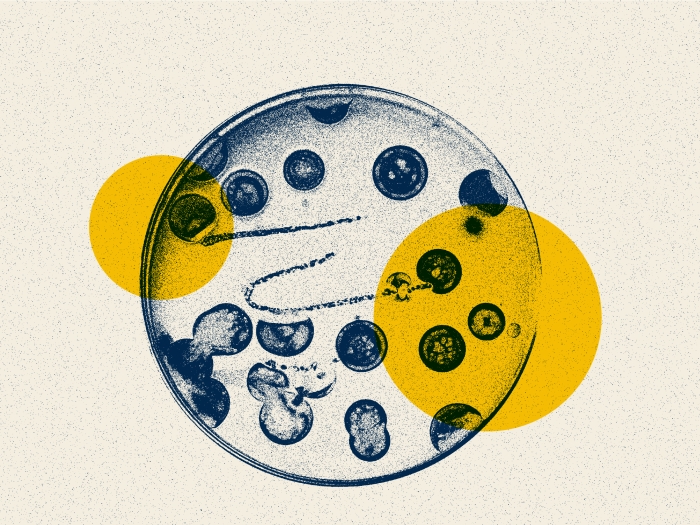Discovery raises hope for more targeted approaches to treatment of autoimmune blood clotting disorder
2:15 PM
Author |

Antiphospholipid syndrome is an incurable autoimmune disease best known for increasing an individual’s risk of blood clotting events like stroke and pulmonary embolism. Autoimmune diseases occur when a person’s immune system mistakenly attacks their own body.
Because of the high risk of blood clotting, most individuals with antiphospholipid syndrome are prescribed indefinite blood thinning regimens using medications like warfarin.
Such medications not only increase the risk of bleeding in individuals with antiphospholipid syndrome but are also not wholly effective. Some patients still experience further clotting, especially in the microscopic blood vessels that course through their organs.
Researchers at University of Michigan Health recently revealed a new mechanism behind antiphospholipid syndrome that the investigators hope will eventually allow treatments to be targeted closer to the source of the problem.
In a research study published in the journal Blood, Somanathapura K. NaveenKumar, Ph.D, a postdoctoral research fellow in the Division of Rheumatology, led a team that identified two enzymes that seem to have lost their normal protective functions in patients with antiphospholipid syndrome.
Cooling inflammation
The team measured the activity of enzymes called CD39 and CD73 on the surface of cells in the circulation of individuals with antiphospholipid syndrome. They unexpectedly found marked reductions in the activity of both. These enzymes normally work together to convert an inflammatory molecule called adenosine triphosphate into a molecule known as adenosine that helps cool inflammation.
“It was quite surprising to find that the activity of these critical enzymes had essentially disappeared in many patients,” said NaveenKumar.
“Since current treatment approaches, like anticoagulants, don’t always fix the problem, we may have found a new way to combat antiphospholipid syndrome closer to its source.”
Without the normal function of CD39 and CD73, the inflammatory adenosine triphosphate accumulates in a cloudy halo around the cell, while adenosine vanishes from that same halo. The accumulated adenosine triphosphate then propels cells like platelets and neutrophils to activate in a way that is more likely to trigger blood clots.
Enzyme activity
The senior author who supervised the project was Jason S. Knight, M.D., Ph.D., the Marvin and Betty Dano Research Professor of Connective Tissue Research, and also an associate professor of internal medicine at University of Michigan Health.
“What exactly happens to the enzyme activity is still something we are trying to figure out,” noted Knight.
“We think it is likely that the cells get confused by the patient’s autoantibodies and either decrease the expression of these normally helpful enzymes or potentially shed them off the cell surface where they can no longer regulate that critical halo.”
While further research will be needed to understand exactly where the enzyme activity is going, the authors did identify some potential workarounds that could be tested sooner rather than later in the clinic.
“We found that the accumulating adenosine triphosphate was triggering inflammation through two surface receptors in particular,” explained NaveenKumar.
“A receptor called P2X7 appears to be the key one for platelets, while P2Y2 is the important one for neutrophils.”
Blocking receptors
When the authors blocked these receptors on antiphospholipid syndrome cells, they returned the cells to their normal healthy state.
“We are right now working to understand which drugs already on the market are best positioned to fill this gap, which tends to be the most practical approach for rarer diseases like antiphospholipid syndrome where we don’t see as much focus on new drug development,” said Knight.
“The hope is that such an approach might not only be safer than blood thinners but also work better.”
“The only way we are going to figure out this puzzle is to keep working with our patient partners who continue to generously donate blood and other types of samples,” continued Knight.
“We are truly indebted to them and hope that they will have the opportunity to see significantly improved approaches to both diagnosis and treatment in the next few years.”
Additional authors: Include, from Michigan Medicine: Wenying Liang, Claire K. Hoy, Cyrus Sarosh, Christine E. Rysenga, Caroline H. Ranger, Caroline E. Vance, and Yu Zuo from the Division of Rheumatology, Department of Internal Medicine; Ajay Tambralli and Jacqueline A. Madison from the Division of Rheumatology, Department of Internal Medicine and the Division of Pediatric Rheumatology, Department of Pediatrics; Suman L. Sood and Jordan K. Schaefer from the Division of Hematology & Oncology, Department of Internal Medicine: and Bruna Mazetto Fonseca from the Division of Rheumatology, Department of Internal Medicine, and the Hematology and Hemotherapy Center, Department of Pathology, University of Campinas, Campinas, Brazil. Fernanda A. Orsi from the Hematology and Hemotherapy Center, Department of Pathology, University of Campinas, Campinas, Brazil.
Funding: This work was supported by National Institutes of Health (NIH), National Heart, Lung, and Blood Institute grant R01HL134846 to J.S.K. A.T. and Y.Z. were supported by grants from the Rheumatology Research Foundation. Y.Z. was also supported by NIH, National Institute of Arthritis and Musculoskeletal and Skin Diseases (NIAMS) grant K08AR080205.
Michigan Research Core: Flow Cytometry Core
Paper citation: “Low ectonucleotides activity and increased neutrophil-platelet aggregates in patients with antiphospholipid syndrome,” Blood. doi.org/10.1182/blood.2023022097
Sign up for Health Lab newsletters today. Get medical tips from top experts and learn about new scientific discoveries every week by subscribing to Health Lab’s two newsletters, Health & Wellness and Research & Innovation.
Sign up for the Health Lab Podcast: Add us on Spotify, Apple Podcasts or wherever you get you listen to your favorite shows.

Explore a variety of health care news & stories by visiting the Health Lab home page for more articles.

Department of Communication at Michigan Medicine

Want top health & research news weekly? Sign up for Health Lab’s newsletters today!





